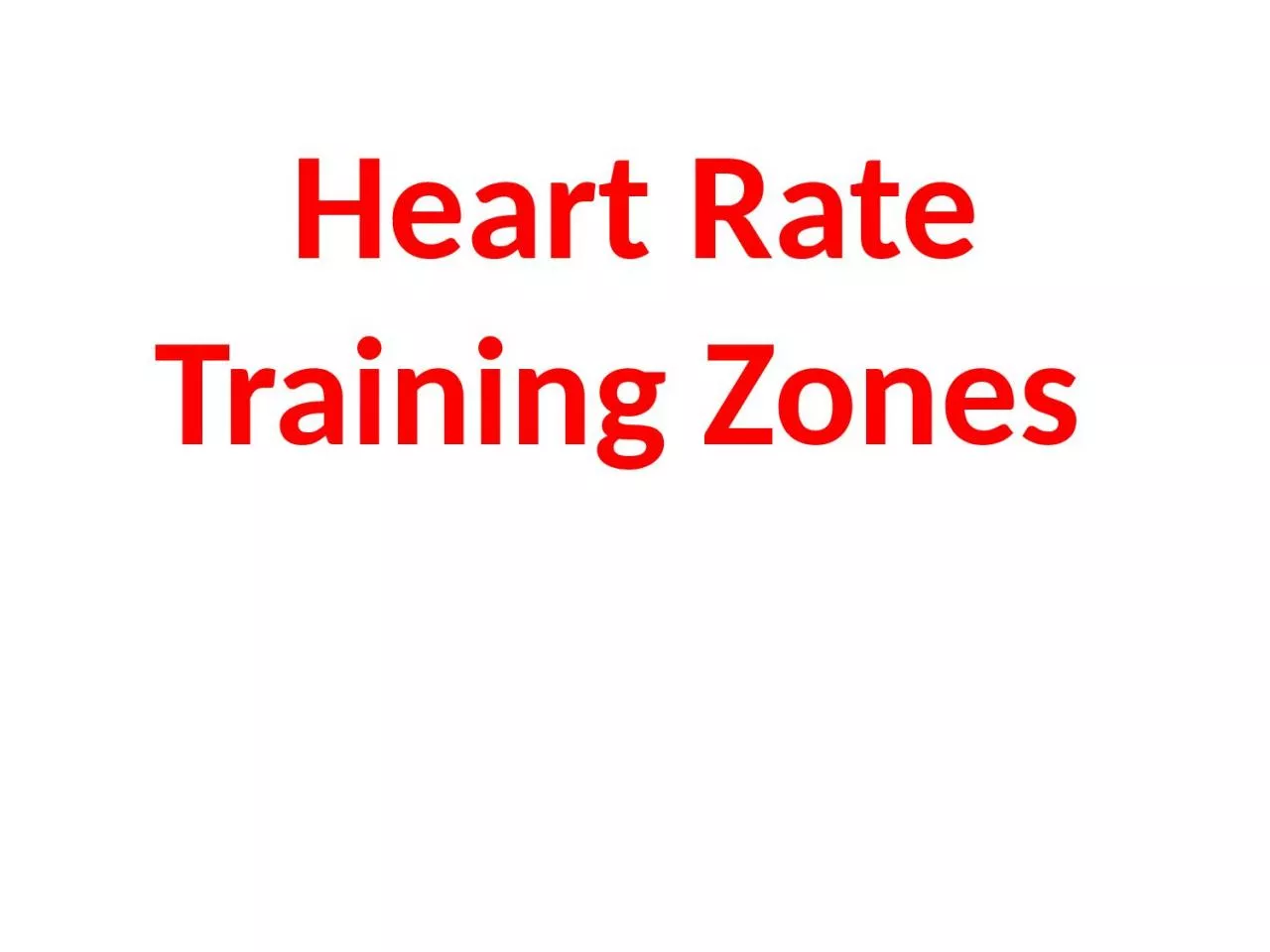

Healthy Heart Zone Warmup 50 60 of maximum heart rate The easiest zone and probably the best zone for people just starting a fitness program It can also be used as a warm up for more serious walkers This zone has been shown to help decrease body fat blood pressure and cholesterol It als ID: 1030165
Download Presentation The PPT/PDF document "Heart Rate Training Zones" is the property of its rightful owner. Permission is granted to download and print the materials on this web site for personal, non-commercial use only, and to display it on your personal computer provided you do not modify the materials and that you retain all copyright notices contained in the materials. By downloading content from our website, you accept the terms of this agreement.
1. Heart Rate Training Zones
2. Healthy Heart Zone(Warm-up)50 - 60% of maximum heart rate: The easiest zone and probably the best zone for people just starting a fitness program. It can also be used as a warm up for more serious walkers. This zone has been shown to help decrease body fat, blood pressure and cholesterol. It also decreases the risk of degenerative diseases and has a low risk of injury. 85% of calories burned in this zone are fats!
3. The Energy Efficient or Recovery Zone – 60% to 70%Training within this zone develops basic endurance and aerobic capacity. All easy recovery running should be completed at a maximum of 70%. Another advantage to running in this zone is that while you are happily fat burning you may lose weight and you will be allowing your muscles to re-energise with glycogen, which has been expended during those faster paced workouts.
4. The Aerobic Zone - 70% to 80%Training in this zone will develop your cardiovascular system. The body's ability to transport oxygen to, and carbon dioxide away from, the working muscles can be developed and improved.
5. As you become fitter and stronger from training in this zone it will be possible to run some of your long weekend runs at up to 75%, getting the benefits of some fat burning and improved aerobic capacity.
6. The Anaerobic Zone - 80% to 90%Training in this zone will develop your lactic acid system. In this zone, your individual anaerobic threshold (AT) is found - sometimes referred to the point of deflection (POD). During these heart rates, the amount of fat being utilized as the main source of energy is greatly reduced and glycogen stored in the muscle is predominantly used.
7. One of the by-products of burning this glycogen is lactic acid. There is a point at which the body can no longer remove the lactic acid from the working muscles quickly enough. This is your anaerobic threshold (AT). Through the correct training, it is possible to delay the AT by being able to increase your ability to deal with the lactic acid for a longer period of time or by pushing the AT higher.
8. The Red Line Zone 90% to 100% Training in this zone will only be possible for short periods. It effectively trains your fast twitch muscle fibres and helps to develop speed. This zone is reserved for interval running and only the very fit are able to train effectively within this zone.
9. Heart rate variations for a given intensity A reduction in heart rate for a given intensity is usually due to an improvement in fitness but a number of other factors might explain why heart rates can vary for a given intensity:Dehydration can increase the heart rate by up to 7.5%Heat and humidity can increase the heart rate by 10 beats/minuteAltitude can increase the heart rate by 10 to 20%, even when acclimatisedBiological variation can mean the heart rate varies from day to day by 2 to 4 beats/minute